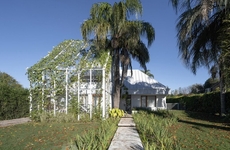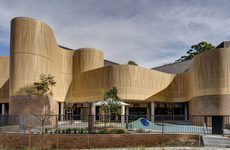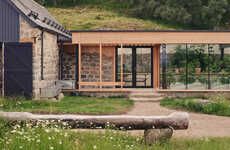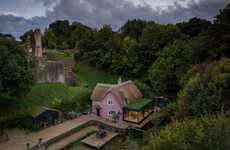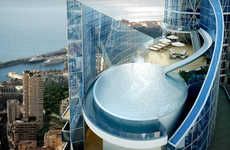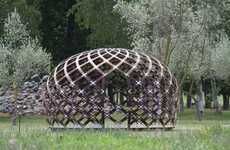
This Glasgow School of Art Design Addition Celebrates The School's History
Laura McQuarrie — October 8, 2014 — Art & Design
The Glasgow School of Art design was recently given an update at the Reid Building, courtesy of Steven Holl. This new campus addition is made up of a semi-transparent etched green glass skin that seems to have been perfectly fit on top of the historical school, making it seem right at home alongside even some of the century-old architecture that surrounds it.
On the inside of the school, the design lets in plenty of natural light, serving as the perfect backdrop for students to study, socialize, work and display their creations. Since the Glasgow School of Art was originally designed in 1909 by Charles Rennie Mackintosh, this addition is respectful to the school's history and even takes care to highlight new views of the Mackintosh building.
On the inside of the school, the design lets in plenty of natural light, serving as the perfect backdrop for students to study, socialize, work and display their creations. Since the Glasgow School of Art was originally designed in 1909 by Charles Rennie Mackintosh, this addition is respectful to the school's history and even takes care to highlight new views of the Mackintosh building.
Trend Themes
1. Semi-transparent Glass Skin - Opportunity for incorporating semi-transparent glass skins in architectural designs for a modern and visually appealing aesthetic.
2. Maximizing Natural Light - Opportunity to prioritize natural light in interior design to create a conducive environment for work and display of creations.
3. Respectful Design Updates - Opportunity to update historical buildings with new additions that seamlessly integrate with the existing architecture.
Industry Implications
1. Architecture - Architects can explore the use of semi-transparent glass skins and natural light to create innovative and visually striking designs.
2. Interior Design - Interior designers can incorporate natural light as a central element in their designs to enhance the ambiance and functionality of spaces.
3. Historical Preservation - Historical preservation organizations can collaborate with architects to update and revitalize century-old buildings with respectful design additions.
0.6
Score
Popularity
Activity
Freshness



